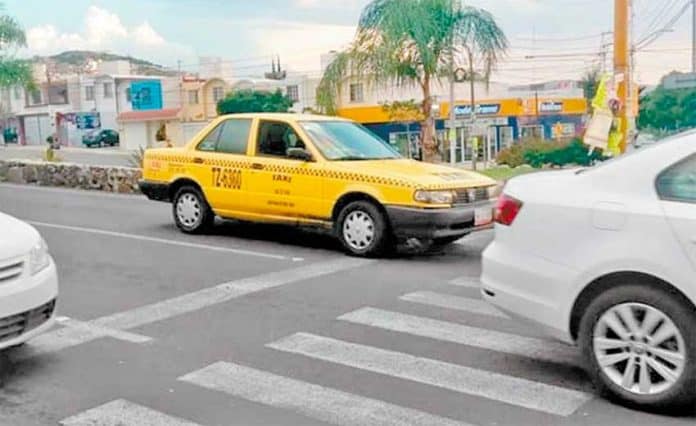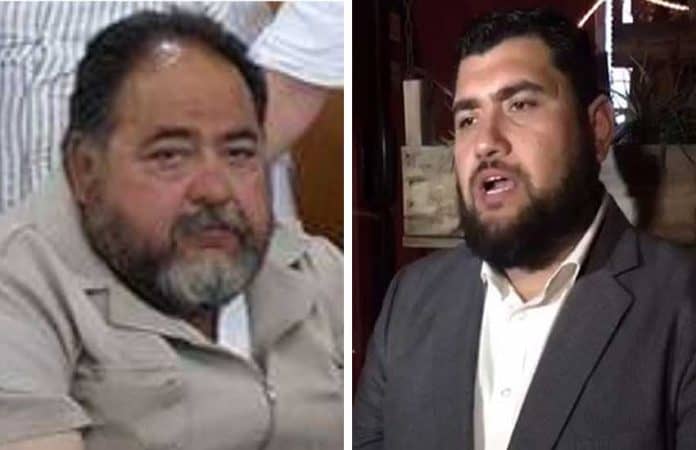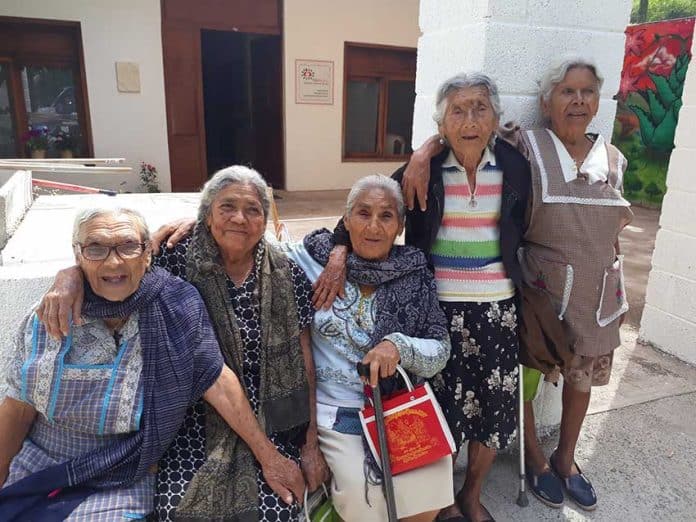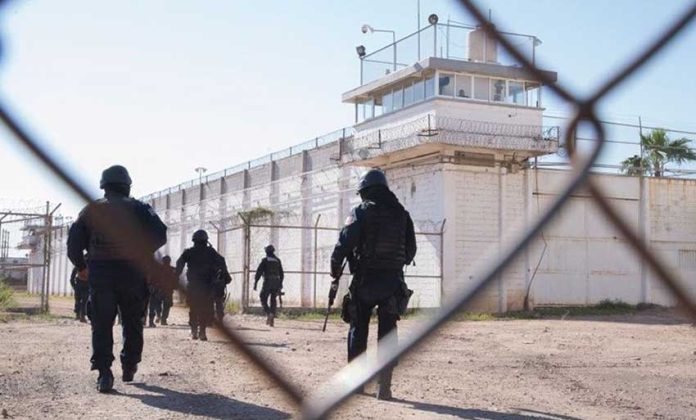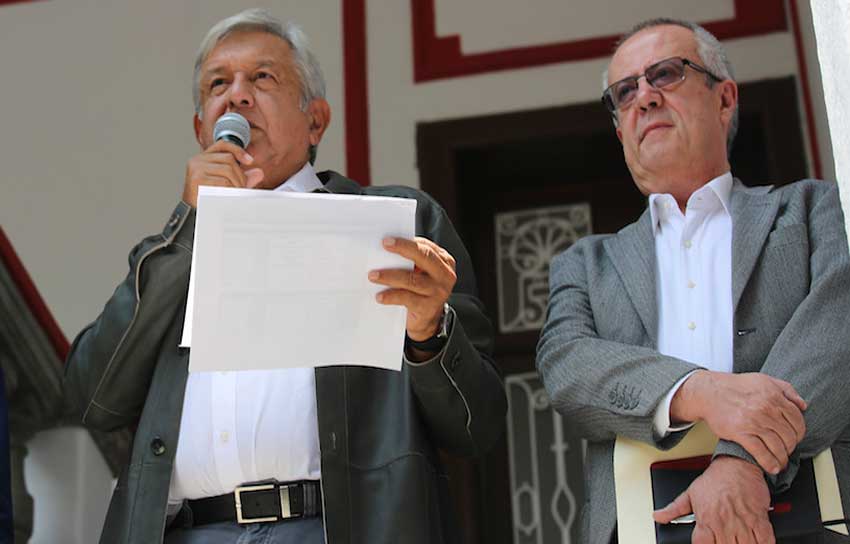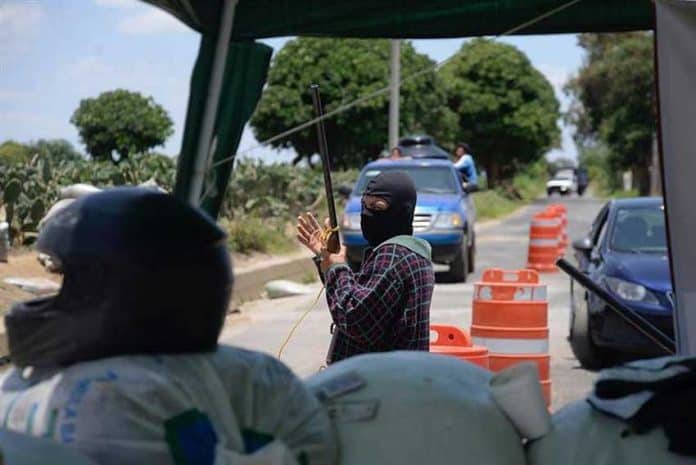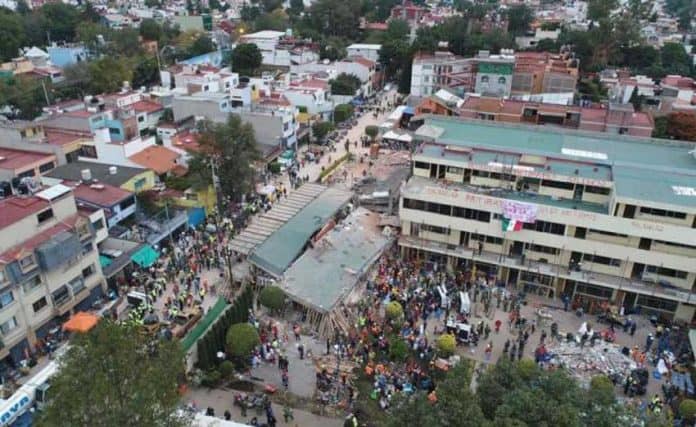In the small town of Santo Domingo Tonalá in the Mixteca region of Oaxaca, the sound of zumba music rings out. But anyone peeking their head around the door to see who these eager zumba dancers might be will likely be surprised by the sight.
Behind the walls of this small community center are 15 or so of the town’s elders dancing to the zumba beat.
This happy scene hasn’t always been the case in this small town whose population rises and falls depending on migration. Eight years ago, when the idea for a non-profit group to help the elderly was just a spark in the eye of the founders, many of the elders who are dancing today were living isolated lives, with little chance of community interaction.
In 2010, Karen Rasmussen joined Alejandra Olguin in a visit to Olguin’s family home in Santo Domingo Tonalá. Olguin’s family migrated to the United States before she was born but continues to visit their home village.
While enjoying breakfast at the market, Rasmussen spotted an old woman who, she said, could have been her own grandmother, struggling to buy the most basic of vegetables.
[wpgmza id=”40″]
“I was stopped in my tracks,” said Rasmussen. “Here I was enjoying my green juice after a hearty breakfast and this woman was struggling to buy tomatoes. ”
The women investigated further and since Rasmussen had a background in international development and Olguin had personal connections in the town, they put a plan in place to help the elders. The organization would be called Nija’nu A.C.
The project started out offering practical aid, through food packages, house repairs and helping the elders to get their paperwork in order to receive their state pension (1,160 pesos every two months, or US $61 at the current exchange rate).
They hired local workers to create access ramps, repair ceilings and even paint the walls of the elders’ houses in new uplifting colors. Once the immediate physical needs were covered, the team began to hear stories about how isolated the elders felt.
Many had family who had migrated to the U.S. and therefore found themselves alone in their old age. Others had no family left alive, while still others had children who were too busy trying to make a living that they weren’t able to give much time to their parents. Whatever the reason, these elders wanted a chance to meet their peers and to feel part of the world again.
Though Nija’nu was and continues to be entirely funded by individual donations and there wasn’t a huge amount of spare cash, the team began to put in place some community events. The logistics were not easy. Many elders struggled to walk and to get out of their homes, so kind and patient local taxi drivers had to be enlisted to pick the elders up and take them to the events.
What started as an afternoon viewing old films evolved into multiple activities through the week. Nija’nu fundraised enough money to rent its own community center, where the elders can go every day. The house has two bedrooms for visiting volunteers as well as an outdoor patio, so the elders can enjoy their classes al fresco.
A whole variety of activities are offered from learning to write their names, to pottery and painting. The elders can come to dance and staff member Karina Ramírez Duran has trained in teaching zumba to the elderly.
“The elders have such a busy life now,” said Rasmussen with a sweet giggle that often showed itself when discussing them. “I think some of the younger members of Santo Domingo Tonalá would also like their own community center.”
While any societal change can be a slow process, Nija’nu has noticed that the local municipal government has started to react to the needs of the elderly members of the community. Over the last few years they have helped by providing hearing and vision tests and giving food aid once every six months in all of the poor communities. There is also help with post-earthquake recovery that prioritizes vulnerable populations.
Every year, Nija’nu publicly celebrates the International Day of the Elder in the main square, where seniors hold banners declaring their rights and even dance in public as the music plays.
The group has also forged connections with the local school, which creates important links between the youngest and oldest generations of the town. During the annual school parade they hired a mototaxi and the elders drove around waving flags and banners. Many of the elderly that Nija’nu helps have gone from being invisible to taking center stage in the community in which they have spent their entire lives.
Rasmussen has seen a great change in the elders that she works with.
“When we first started Nija’nu we noticed that if the elders got sick that they didn’t even try to get well,” she said.
Now, with the support of friends made through Nija’nu activities and with the care of Nija’nu staff, they see a reason to try.
Nija’nu hasn’t just helped the elders, though. It has also provided four part-time jobs within the community. Rasmussen has watched them thrive and grow over the last few years. Their latest staff member, Adriana Espinosa Luengas, contracted polio as a child and struggles with mobility. As a result she is going to train in “chair zumba,” which will help some of the elders who are in wheelchairs or cannot stand for long.
She is also teaching the elders to write their names and with the help of Nija’nu she has learned to use a computer, and now sends the monthly reports via email.
“I like seeing how everyone is thriving,” Rasmussen said when asked how it felt to look on the project that is now in its eighth year.
She has seen friendships form between the elders, which provides another layer of support for them.
As for the dancing, this is something that has become a regular occurrence in the Nija’nu community center. Whether it is zumba class or free dancing to the beat of the marimba, the smiles on the seniors’ faces say it all.
“The elders love dancing,” said Rasmussen.
Running a non-profit organization has its challenges and the future isn’t always certain but we can only hope that the sound of zumba and the laughter of the elders will be ringing out in Santo Domingo Tonalá for many years to come.
If you are interested in donating to Nija’nu or would like to offer voluntary services, information can be found on their website. You can also follow Nija’nu on Facebook.
[soliloquy id="57153"]
Susannah Rigg is a freelance writer and Mexico specialist based in Mexico City. Her work has been published by BBC Travel, Condé Nast Traveler, CNN Travel and The Independent UK among others. Find out more about Susannah on her website.
